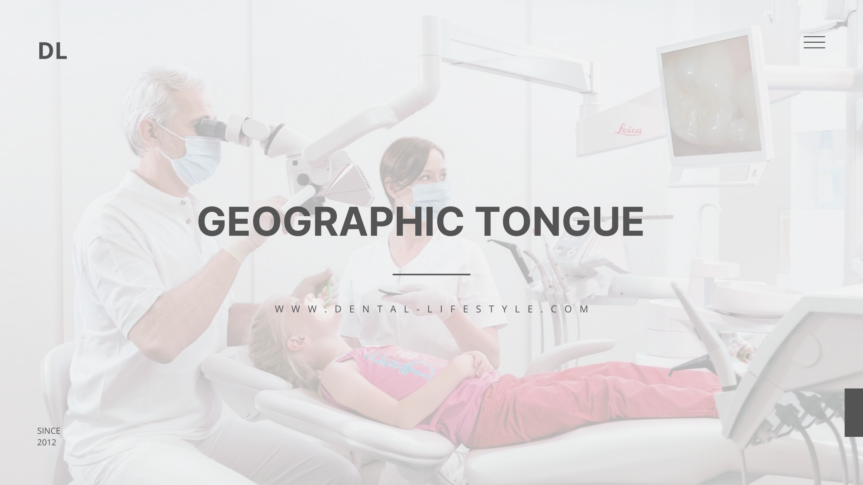Geographic tongue is the name of a nasty condition that gets its name from its map-like appearance on the upper surface and sides of the tongue. It may occur in other areas of your mouth, as well.
You’ll be relieved to know that this condition is a harmless, benign condition that isn’t linked to any infection or cancer. Two other names to describe it are benign migratory glossitis and erythema migrans.
Affecting about 1% to 3% of people, geographic tongue can show up at any age. However, it tends to affect middle-aged or older adults more often. It appears to be more common in women than in men.
SYMPTOMS OF GEOGRAPHIC TONGUE
The signs are irregular, smooth, red patches on parts of the tongue. These patches may:
- Have a white or light-colored border
- Vary in size, shape, and color
- Appear in one area, and then move to another area
- Come and go or change very quickly in days, weeks, or months
- Last up to a year
You may be unaware that you have a geographic tongue until your dentist or other health care provider diagnoses it during an oral exam.
About one in 10 people with geographic tongue may have mild discomfort or a burning or painful sensation. This is often from sensitivity to substances such as:
- Hot, spicy, or acidic foods
- Cigarette smoke
- Toothpaste
CAUSES AND RISK FACTORS
This condition can occur when parts of the tongue are missing layers of small bumps called papillae. They normally cover the entire upper layer of your tongue. Why do you lose these papillae? Nobody knows for sure. However, because the geographic tongue tends to run in families, genetics may be a common link.
Geographic tongue has also been seen more frequently in people with psoriasis and in those with fissured tongue. In a fissured tongue, cracks and grooves appear on the tops and sides of the tongue.
TREATMENT
Seeing a dentist or doctor is the best way to rule out a more serious problem. In most cases, he or she can diagnose the condition from a description of your symptoms and from examining your mouth and tongue. You may need tests to rule out other medical conditions.
In most cases, any pain or discomfort will get better without treatment. But if you have severe, ongoing pain, medication can help. These are examples of what your doctor or dentist may prescribe:
- Pain relievers
- Anti-inflammatories
- Mouth rinses with anesthetic
- Corticosteroids applied directly on the tongue
- Zinc supplements
If you’re wondering about steps you can take to hasten the relief of symptoms, try limiting these substances or avoid them altogether:
- Tobacco
- Hot, spicy, or acidic foods or dried, salty nuts
- Toothpaste with additives, whitening agents, or heavy flavoring.
Athina Tsiorva


